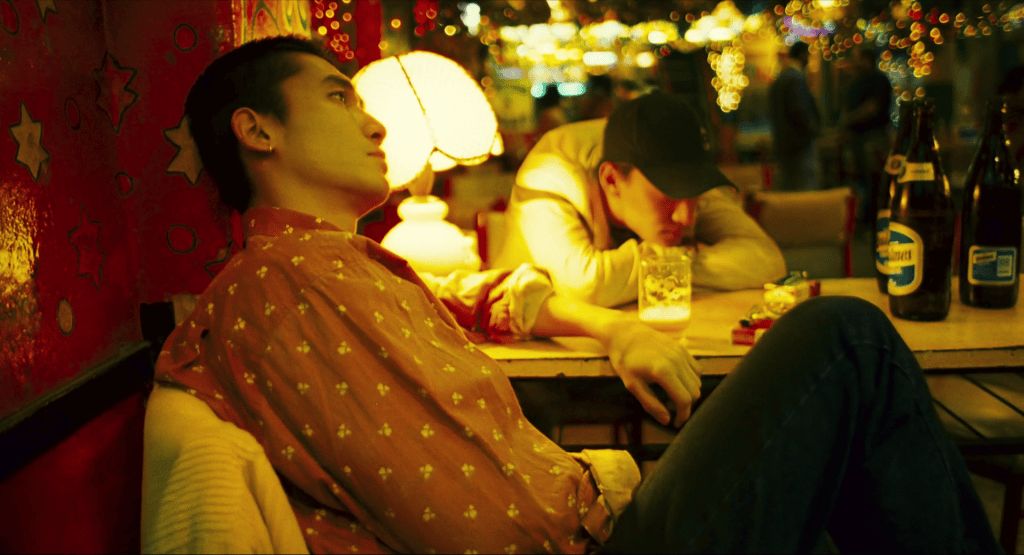Every month, we at The Spool select a filmmaker to explore in greater depth — their themes, their deeper concerns, how their works chart the history of cinema, and the filmmaker’s own biography. This March, we revisit the sumptuous, romantic, deeply humanistic works of Hong Kong’s favored son, Wong Kar-wai. Read the rest of our coverage here.
Like most pieces of queer cinema, Happy Together was widely misunderstood on its initial release. Looking back on its reviews in 1997 by American critics, there’s a puzzling emphasis on the narrative. Specifically, many critics at the time took umbrage for what they perceived as a “laggy” storyline. So prominent were these criticisms that they ended up giving the film a Metacritic score just one point about Star Wars: Episode III- Revenge of the Sith.
Much like city folks in an ad for FamersOnly, these critics just didn’t get Happy Together. It’s not a plot-driven film. It’s one of atmosphere. Director Wong Kar-wai’s gift for dreamlike visuals isn’t dictated by a traditional three-act structure or tidy character arcs. He’s more interested in evoking emotions, mood, atmosphere. That’s especially true in Happy Together, a tender tale that’s as much about coming to terms with a past you can’t change as it is the love affair between two men in Argentina.
Happy Together concerns Ho Po-Wing (Leslie Cheung) and Lai Yiu-Fai (Tony Leung Chiu-wai). They’ve been together for a while now, but as the story begins, the duo, during a trip to Buenos Aries, decide to call it quits. They’re now trying to make enough cash to get home to Hong Kong, but their paths soon intertwine once again. After Fai shows up bruised, Po-Wing allows him to stay at his place to heal. This leads to the two rekindling their dynamic, which sparks everything from explosive arguments to slow dances in their kitchen.
Something remarkable about Happy Together is that, unlike so many pieces of queer cinema, it’s not a film about coming out of the closet. The sexuality of our lead characters is never in question. Even societal rejection of queer people has a presence limited to just Fai’s off-screen father. Eschewing these hallmarks of LGBTQIA+-oriented cinema serves Happy Together well in several ways, including how it allows the feature to derive conflict from more specifically-detailed places.
Something remarkable about Happy Together is that, unlike so many pieces of queer cinema, it’s not a film about coming out of the closet.
The lack of these qualities also emphasizes how the project is aiming to be more about ambiance than story-driven means. Wong Kar-wai and cinematographer Christopher Doyle capture Happy Together in a way that makes the whole film feel like you’re walking through a wistful memory of a time gone by. It’s a remarkable visual feat, conjuring up the look of a dream yet stirring up all-too-real emotions in your soul. That emotionally potent combo informs the most evocative imagery in Happy Together.
Such visuals are also informed by the film’s fascinating exploration of feeling adrift in the world. This is represented on a surface-level by having the two leads hail from Hong Kong but being stuck in Buenos Aires. On a deeper level, though, Happy Together is the story of what happens when we become disconnected from the ones we love. Fai spends much of his screentime grappling with his complicated relationship with two important men in his life, Po-Wing, and his father.
Even when they’re not on-screen (Fai’s father is never physically seen), these two characters cast a large shadow over Fai and inform his sense of uncertainty over where he fits in the world. His disconnect from the larger world is cleverly reflected in pronounced visual terms, such as a scene showing the city of Hong Kong upside down. But it also manifests in such quietly powerful terms, like Fai capturing his cries with a tape recorder. We can’t hear his anguish, but Kar-Wai’s direction makes it clear that Po-Wing’s absence informs these sounds of woe. Finally, he has an outlet for these powerful bottled-up emotions of loneliness.

That kind of moment is one of many instances of Happy Together where see the skills of Fei’s actor, Tony Leung. A legend of Hong Kong cinema, Leung more than justifies his reputation with his incredibly layered yet effortless performance. Playing opposite Leung for much of the runtime is Leslie Cheung. Even in Po-Wing’s most aggravating moments, Cheung conveys a kind of charm that makes it understandable why Fei would be attracted to this guy. Straddling the line between irritating and bearable isn’t an easy feat but Cheung pulls it off nicely.
Both lead actors embrace the rich canvas of queer emotions in Happy Together with aplomb. That canvas also includes phallic symbols throughout the movie that allows male homosexuality to hide in plain sight in general society. Fai’s friend Chang (Chen Chang) visits a lighthouse that seems to protrude to the sky while one of the most sensual scenes in the whole feature depicts Po-Wing and Fai standing inches apart while cigarettes dangle out of their mouth.
Sometimes, a cigar is just a cigar, but here, it’s clear there’s a deeper meaning behind the presence of these items. These objects once again see Kar-Wai reflecting the mindsets of Happy Together’s characters in such thoughtful ways. Watch any of this director’s other works and you’ll see no shortage of examples of how he captures longing and interior emotions so vividly. But that quality has never been as strongly-realized as it has in the complex love story at the heart of Happy Together.
Critics may have been kinder to titles like Liar Liar back in 1997, but the test of time has allowed Happy Together to emerge as a truly outstanding piece of filmmaking.